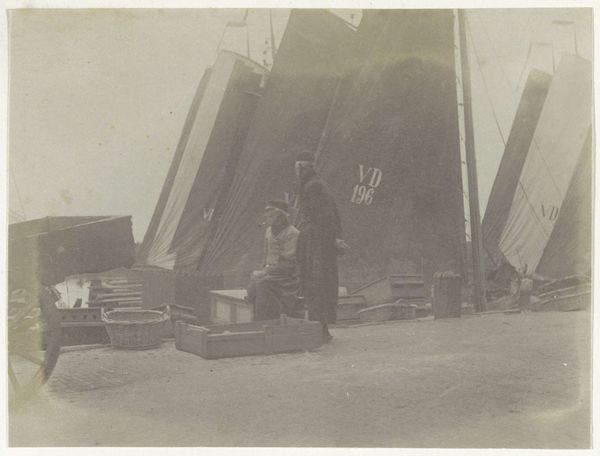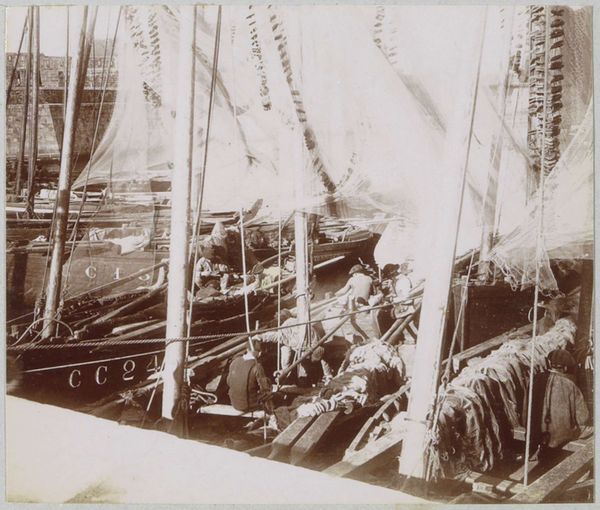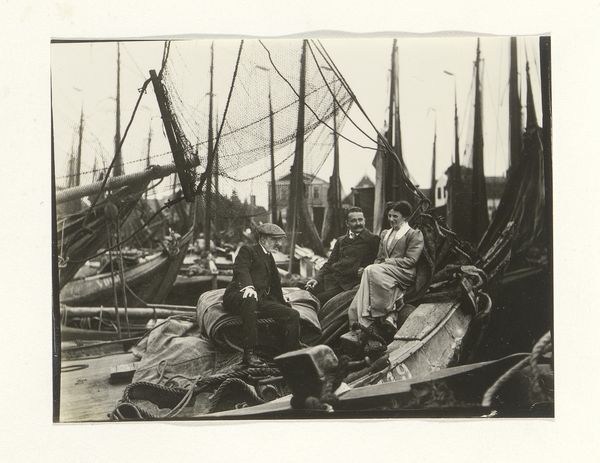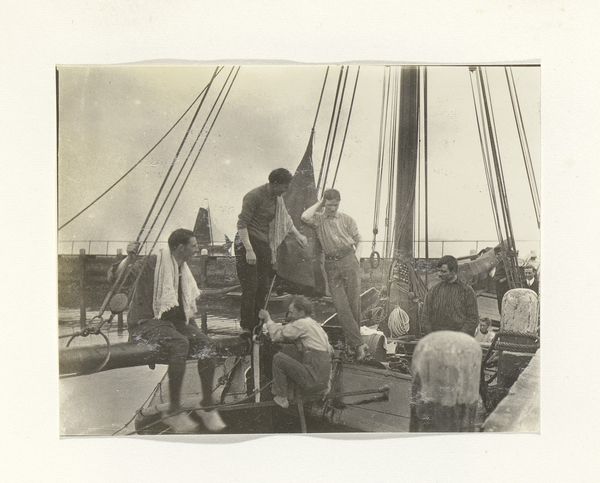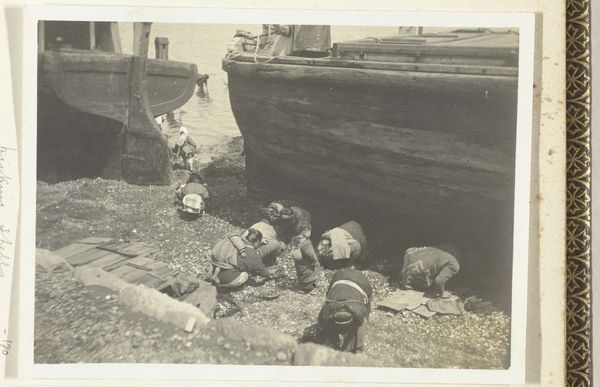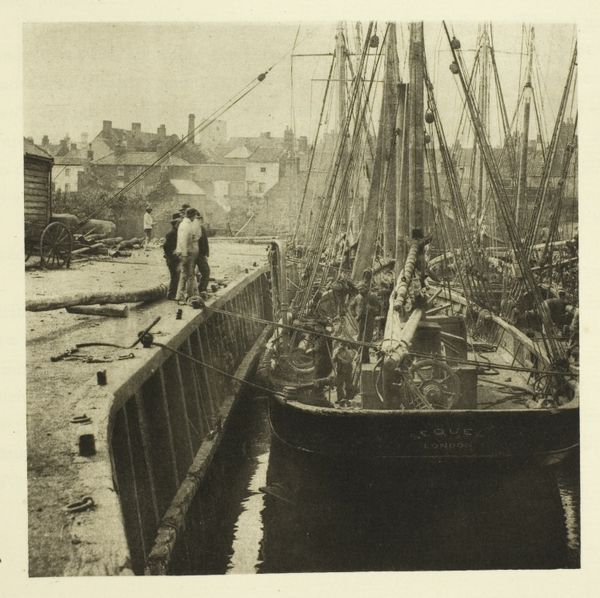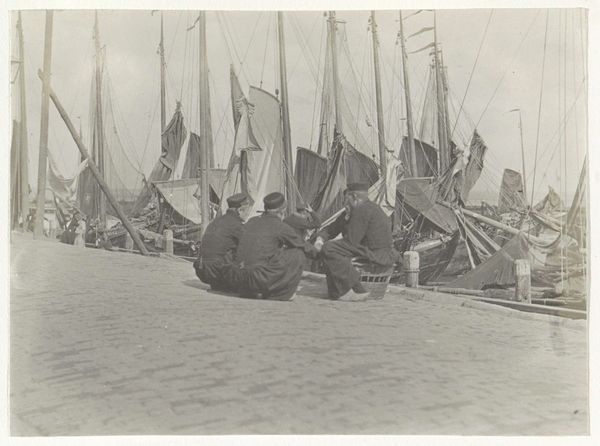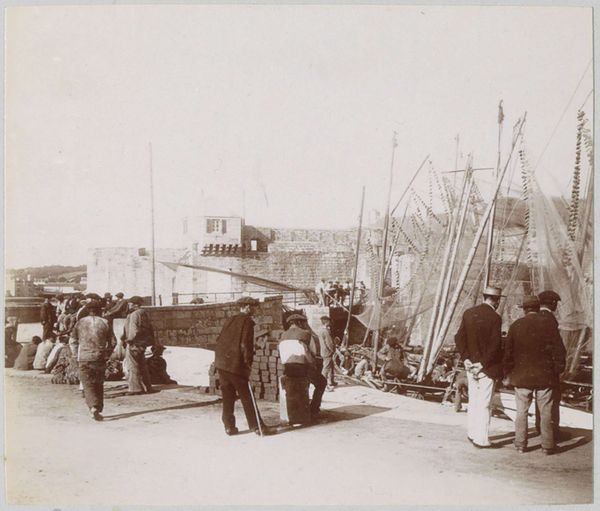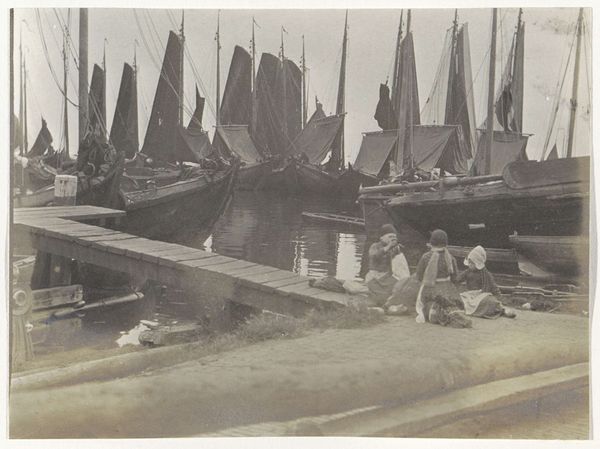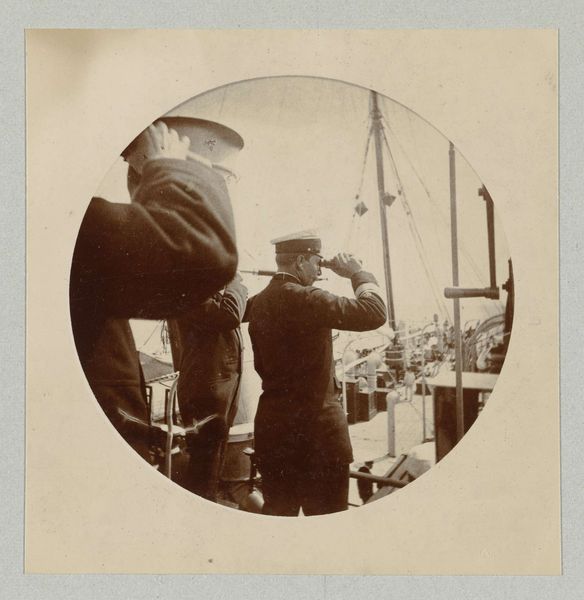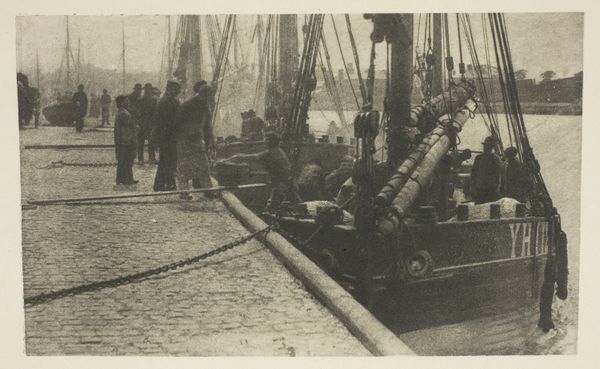
Vrouw met jongen in klederdracht op een kade, vermoedelijk in Volendam c. 1900 - 1910
0:00
0:00
photography, gelatin-silver-print
#
portrait
#
dutch-golden-age
#
photography
#
gelatin-silver-print
#
genre-painting
#
realism
Dimensions: height 100 mm, width 99 mm
Copyright: Rijks Museum: Open Domain
Editor: This gelatin-silver print, “Vrouw met jongen in klederdracht op een kade, vermoedelijk in Volendam,” dating from around 1900-1910 by G. Hidderley, possesses a sense of stillness despite its detailed depiction of daily life. A woman and child, presumably in Volendam, stand near fishing nets. What can you tell me about the context surrounding imagery like this? Curator: This image exists within a broader history of representing regional cultures, particularly through photography and the rise of tourism. Volendam, even then, was becoming a popular tourist destination. Photographs like these weren't simply neutral documents; they were often staged and catered to a specific, romanticized view of Dutch tradition for external consumption. Do you see any clues about how the photograph might be staged? Editor: Hmm, maybe the clothing? Their traditional attire seems particularly emphasized, almost like a deliberate performance of “Dutchness.” Curator: Precisely! The woman and child are likely posed in ways that conform to what viewers at the time expected from images of Dutch fisherfolk. Photography played a vital role in shaping perceptions of national identity and promoting cultural heritage—sometimes even creating it where it didn't necessarily exist before. This connects to much larger questions about how societies represent themselves and others, and for whom. Editor: So it’s less about authentically capturing a moment and more about constructing an image for a particular audience? Curator: Exactly. And consider the institutional forces at play. Who commissioned these images? Who collected and displayed them? These factors influenced which stories were told and which remained unseen. The history of art and photography is intertwined with economic and political structures, shaping not just the image, but its meaning and reception. Editor: That makes me look at this photograph with completely new eyes. I see the performance and construction now. Curator: Indeed. It encourages a critical understanding of how seemingly straightforward representations of the past can be actively crafted to promote specific narratives about culture and identity.
Comments
No comments
Be the first to comment and join the conversation on the ultimate creative platform.
